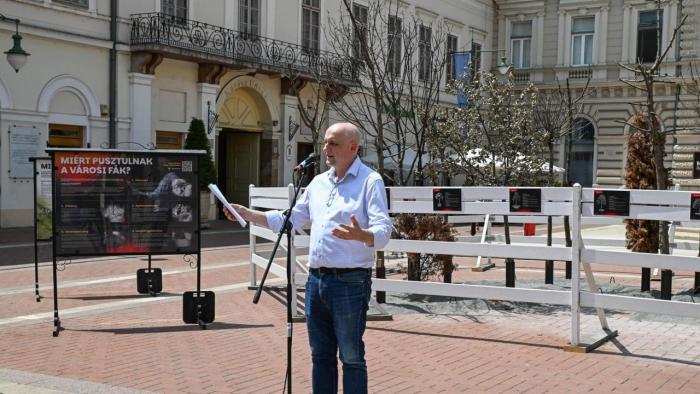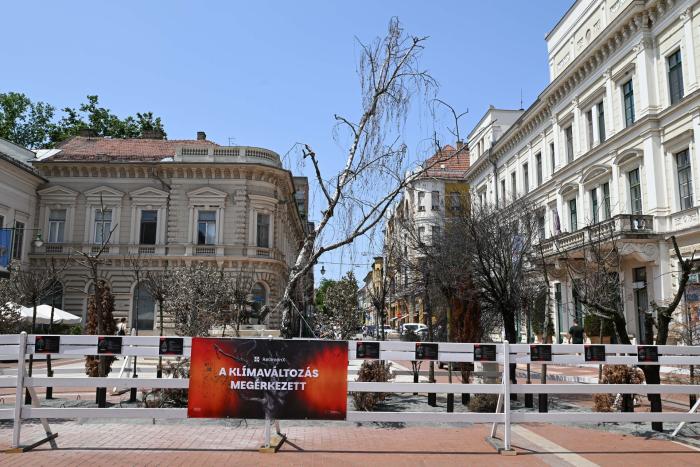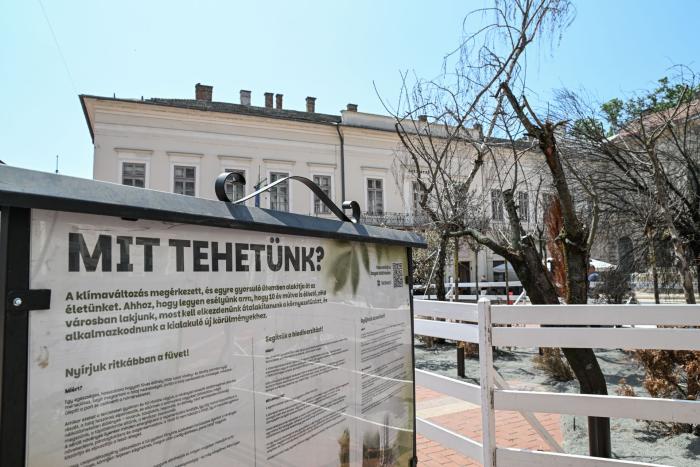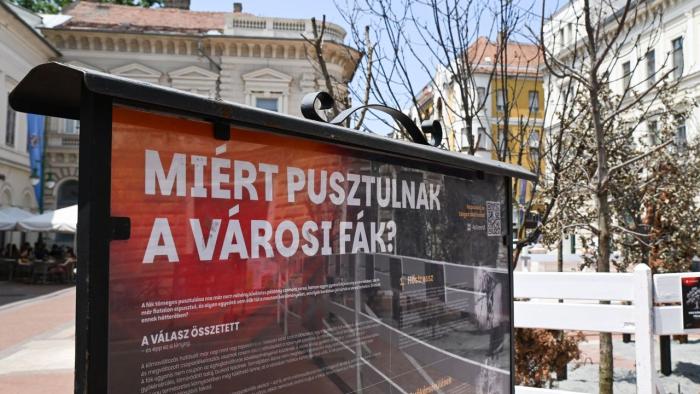
Saying Goodbye to Szeged’s Old Climate
Although urban trees always have a much harder time surviving than their rural counterparts, the number of dying trees has risen alarmingly in recent years. The exhibition’s purpose is to draw attention to the fact that now even hundreds of oaks, thujas, birches, lindens, sour cherry trees, maples, and walnuts—which for decades have endured the harsh urban environment—are giving up the fight, even in relatively favorable locations such as Újszeged’s Erzsébet Grove. Research shows that within a few years, the Southern Great Plain will have to bid farewell to some of its most beloved urban trees, such as the sweet chestnut, large-leaved linden, silver birch, and the majority of conifer species.
The exhibition commemorates these tree species, presenting the reasons and extent of their endangerment, and even providing care tips for those who still have healthy specimens in their gardens.
While trees can die for a variety of reasons, experts unanimously agree that one of the most important causes of the surge in plant mortality is the drastic change in the climate around Szeged. The main problem is the region’s increasing aridity: severely drought-stricken years (2022 and 2024 so far) have followed one another, and their serious consequences are only now becoming truly visible. In February, the lowest groundwater level ever measured near Szeged was recorded. Despite the happily rainy May, the groundwater level is still about two meters below the 30-year average, many wells in the area have dried up, and the moisture content of the topsoil has not been fully replenished.
Since, by summer, the upper soil layers hold almost no accessible moisture, shallow-rooted trees and shrubs either dry out immediately or become so weakened that they can no longer resist the pests and diseases that eventually kill them. The fact that even the tips of the crowns of seventy- to eighty-year-old deep-rooted oak trees in Erzsébet Grove have begun to dry out is a clear sign that the problem is not confined to the densely built city center.
It is important to note that the water shortage far exceeds what could be replenished through irrigation. The change is happening on a much larger scale: the established climate patterns of our region are transforming around us—and extremely quickly. According to climate researchers, the most important thing is to continuously analyze the situation and, based on the latest data, develop long-term adaptation strategies. Where we are heading is difficult to predict precisely, but in the medium term, it is most likely that we will face warmer and drier conditions than before, with more frequent extreme weather events.
The diverse partnership created by the Szeged Municipality under the European Urban Initiative–supported ReGreenX project aims to respond to this problem in time. For months, the scientific working group set up to address the situation has been compiling a list of drought-tolerant plant species that are more likely to survive under the emerging new climatic conditions.
ReGreenX aims to make this recommended plant list available to everyone—residents, professionals, and tree nurseries alike. Soon, new types of climate-conscious plantings will also appear in the city’s public spaces. The program will provide numerous opportunities—grants, training, reference gardens, free plants, and horticultural guides—for Szeged residents who want to green their city. That’s why it’s worth subscribing to the ReGreenX newsletter and following its newly launched communication channels, where those interested can learn more about the local impacts of climate change and the various forms and possibilities of adaptation.
The exhibition was opened by Sándor Nagy, Deputy Mayor for Urban Development of Szeged

Climate change has arrived

climate change

climate change

climate change